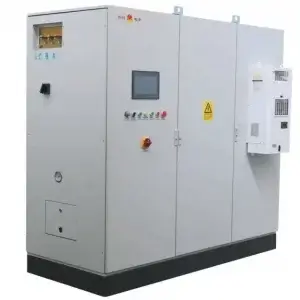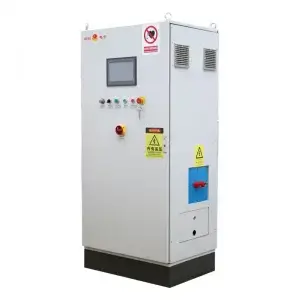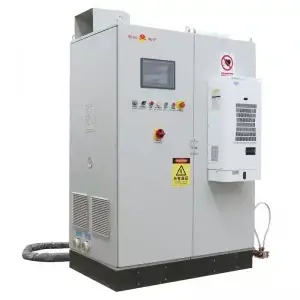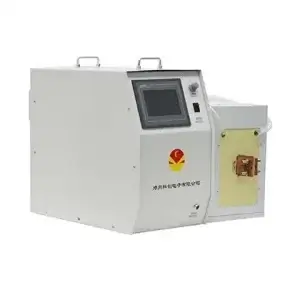Medium-frequency pipe bending machines use medium-frequency electrical induction heating to bend workpieces under local heating conditions. Compared with general cold-state pipe bending machines, not only are complete sets of special molds unnecessary, but also the volume of the machine tool only accounts for 1/3 to 1/2 of that of a cold-state pipe bending machine of the same specification. The medium-frequency hot pipe bending process is the most economical and effective among various existing pipe bending processes.
The process of medium-frequency pipe bending involves putting an induction coil on the part of the steel pipe to be bent, clamping the pipe head with a mechanical arm, passing a high-density medium-frequency current through the induction coil to heat the steel pipe. When the temperature of the steel pipe rises to a plastic state, a mechanical thrust is applied at the rear end of the steel pipe for bending, and the bent part of the steel pipe is quickly cooled with a coolant. The simple process flow is to heat, push, bend, and cool simultaneously to complete the pipe bending production.
Features of the medium-frequency pipe bending machine:
This process can avoid the uneven wall thickness of the bent pipe caused by the thinning of the convex side of the pipe wall under tension and the thickening of the concave side of the pipe wall under pressure during the forming process of the traditional pipe bending process.
With this process, small-radius (R≈D) and thin-walled (t/D≈0.015) 180-degree elbows with uniform wall thickness can be pushed and formed, which cannot be achieved by other pipe bending processes.
If various process parameters are reasonably designed, this process can ensure that the wall thickness of each part of the pipe remains unchanged during the pipe bending forming process, that is, it is always equal to the wall thickness of the straight pipe blank before deformation.
With this process, elbow pipes with various bending angles such as 45 degrees, 90 degrees, and 180 degrees of the same caliber can be pushed and formed at one time on the same ox-horn mandrel, with high production efficiency.
The working environment is good, and there is no pollution during the heating process, etc.



